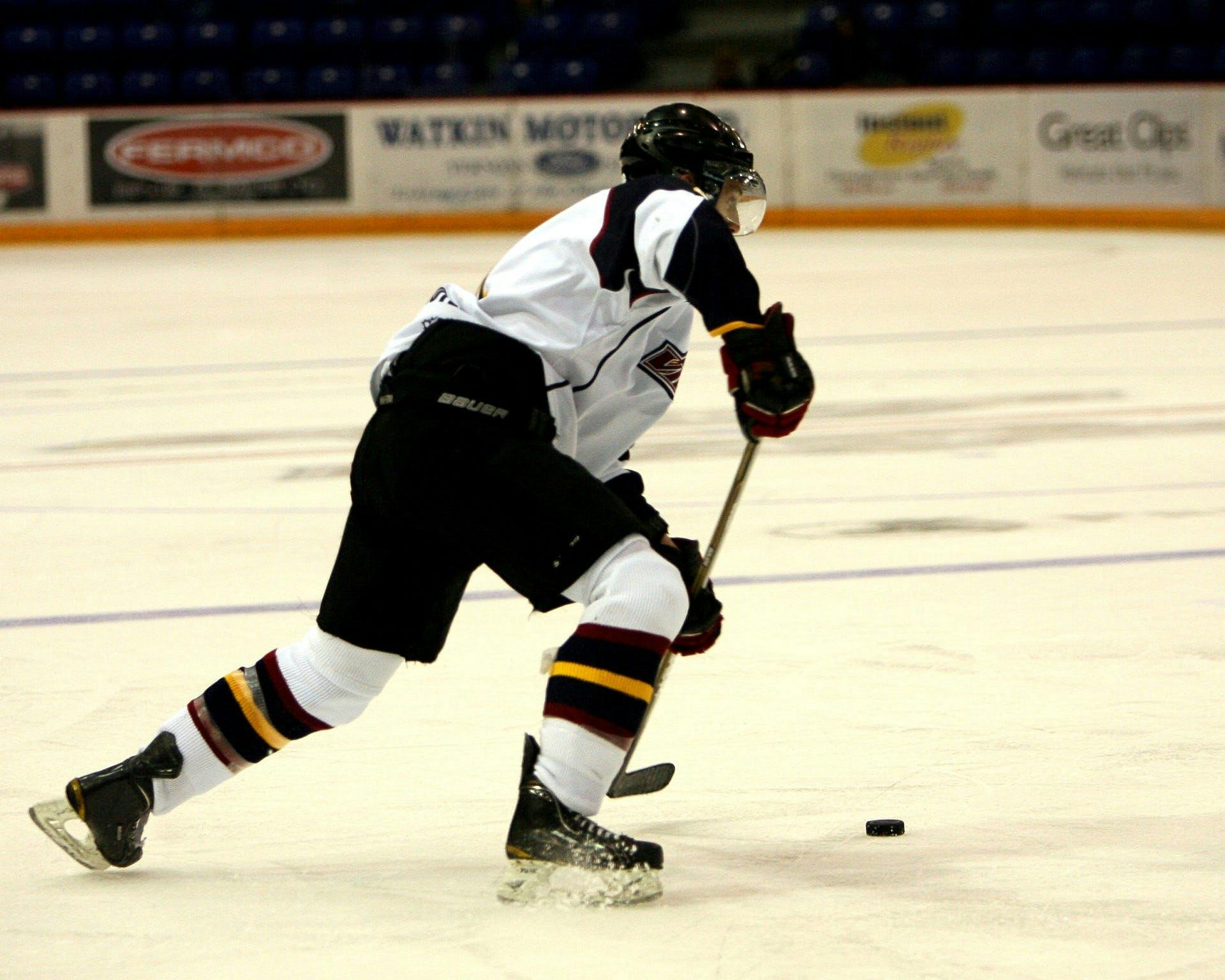Something that might come as a surprise to non-hockey players is that ice hockey is one of the most physically demanding sports around. Of course, those of us who hit the ice already know this. And no, we don’t mean that the sport is physically demanding in terms of contact — even non-contact shinny is physically demanding. It works out your entire body, it’s a high-intensity interval sport, and depending on the position you play, it can work out your body in different ways.
Ice Hockey Works Out Your Entire Body

By playing ice hockey, you’re simultaneously working out your lower body, core, and upper body in a variety of ways. Your lower body and core will receive the most exercise, but that doesn’t mean your upper body is left out.
As far as your lower body is concerned, it’s used in its entirety to propel you across the ice. Pushing against the ice to move yourself is a lot of work, as is turning and stopping. From the outside, it might look easier than running since you’re sliding across the ice on skates. But as anyone who has skated before knows, this is anything but true. It’s much more physically demanding as far as forms of locomotion go due to all of the sudden starts, stops, and changes in direction. On top of that, the hockey stance itself is a workout that uses both your legs and core.
Next comes your core, which is just as important as your lower body for ice hockey. As just mentioned, assuming that you have good form and aren’t arching your back, the squatting hockey stance is a great workout for your core. Additionally, the twisting motions from swinging your stick or turning your body to stop will also increase lateral core strength. And, while you may not realize it, simply balancing on your skates is working out your core. Thanks to all of this, hockey is one of the most core-intensive sports around.
Lastly, there’s your upper body. Overall, hockey isn’t nearly as good at exercising your upper body as some other sports are. But, the relatively small amount it does work out your upper body still adds to the overall physicality of the sport. Swinging your stick accounts for a small amount of upper body exercise. Surprisingly, simply carrying the weight of your pads is also a significant contributor.
Hockey is a High-Intensity Interval Sport

You may have heard of, or even participated in, high-intensity interval training (HIIT). HIIT is a workout routine that’s defined by short bursts of high-intensity exercises, including sprints, burpees, and more. With this routine, you work extra hard for 30-90 seconds, then rest for the same amount of time before doing your next interval. Not only is this a great way to build muscle, but it’s also a great way to burn fat — even as you rest between intervals, your body continues to burn calories.
Now consider how ice hockey is played. It functions exactly like HIIT. Players are only on the ice for about a minute or two at a time before rotating out and onto the bench to rest. But, that short amount of time spent on the ice is full of explosive movement that will leave your body exhausted. So when you’re playing ice hockey, unless you’re the goaltender, you’re getting the same workout that you would with HIIT.
Different Levels of Physicality for Different Positions

As just hinted at, not everyone on the ice is going to be getting the same workout. Goalies, for example, aren’t going to be getting the high-intensity workouts that forwards and defencemen are. However, to counteract that, goalies spend the most amount of time on the ice by far. And while they aren’t skating around, their position is still a tiring and demanding one.
As a forward, you’re generally going to cover the most distance on the ice at a high intensity. As a defenceman, you’re generally going to cover the most distance on the ice overall. So you can kind of think of these positions as being like someone who runs sprints vs. someone who runs a marathon. They’re both great for exercise, but they’re different.
Conclusion
Ice Hockey is one of the most physically demanding sports there is. And while it may seem odd, that’s actually a benefit of the sport, not a weakness. The physicality of hockey doesn’t serve as a barrier to entry any more than in any other sport. Just about anyone can pick it up. But, once you’re out on the ice, you’ll get an intense workout no matter what your skill level or position is. Everyone can benefit from the high-intensity interval exercise afforded by hockey.
Shinny USA
If you’re looking to join a recreational ice hockey league, Shinny USA might be the perfect fit for you. We offer both pickup and league play in a non-contact environment that allows for adults of all ages and skill levels to play together. Play times are in the early morning at a variety of rinks around southeastern Pennsylvania. Contact us today for more information on how to join.
